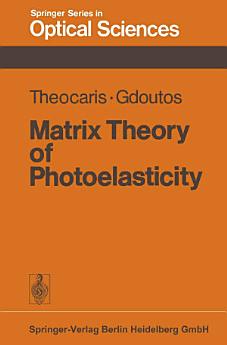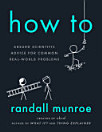Matrix Theory of Photoelasticity
јун 2013. · Springer Series in Optical Sciences 11. књига · Springer
E-knjiga
354
Stranica
reportOcene i recenzije nisu verifikovane Saznajte više
O ovoj e-knjizi
Photoelasticity as an experimental method for analyzing stress fields in mechanics was developed in the early thirties by the pioneering works of Mesnager in France and Coker and Filon in England. Almost concurrently, Föppl, Mesmer, and Oppel in Germany contributed significantly to what turned out to be an amazing development. Indeed, in the fifties and sixties a tremendous number of scientific papers and monographs appeared, all over the world, dealing with various aspects of the method and its applications in experimental stress analysis. All of these contributions were based on the so-called Neumann-Maxwell stress-opticallaw; they were developed by means of the classical methods of vector analysis and analytic geometry, using the conventionallight-vector concept. This way of treating problems of mechanics by photoelasticity indicated many shortcomings and drawbacks of this classical method, especially when three-dimensional problems of elasticity had to be treated and when complicated load and geometry situations existed. Meanwhile, the idea of using the Poincare sphere for representing any polarization profile in photoelastic applications was introduced by Robert in France and Aben in the USSR, in order to deal with problems of polarization oflight passing through aseries of optical elements (retarders andjor rotators). Although the Poincare-sphere presentation of any polarization profile con stitutes a powerful and elegant method, it exhibits the difficulty of requiring manipulations in three-dimensional space, on the surface of the unit sphere. However, other graphical methods have been developed to bypass this difficulty.
Ocenite ovu e-knjigu
Javite nam svoje mišljenje.
Informacije o čitanju
Pametni telefoni i tableti
Instalirajte aplikaciju Google Play knjige za Android i iPad/iPhone. Automatski se sinhronizuje sa nalogom i omogućava vam da čitate onlajn i oflajn gde god da se nalazite.
Laptopovi i računari
Možete da slušate audio-knjige kupljene na Google Play-u pomoću veb-pregledača na računaru.
E-čitači i drugi uređaji
Da biste čitali na uređajima koje koriste e-mastilo, kao što su Kobo e-čitači, treba da preuzmete fajl i prenesete ga na uređaj. Pratite detaljna uputstva iz centra za pomoć da biste preneli fajlove u podržane e-čitače.










